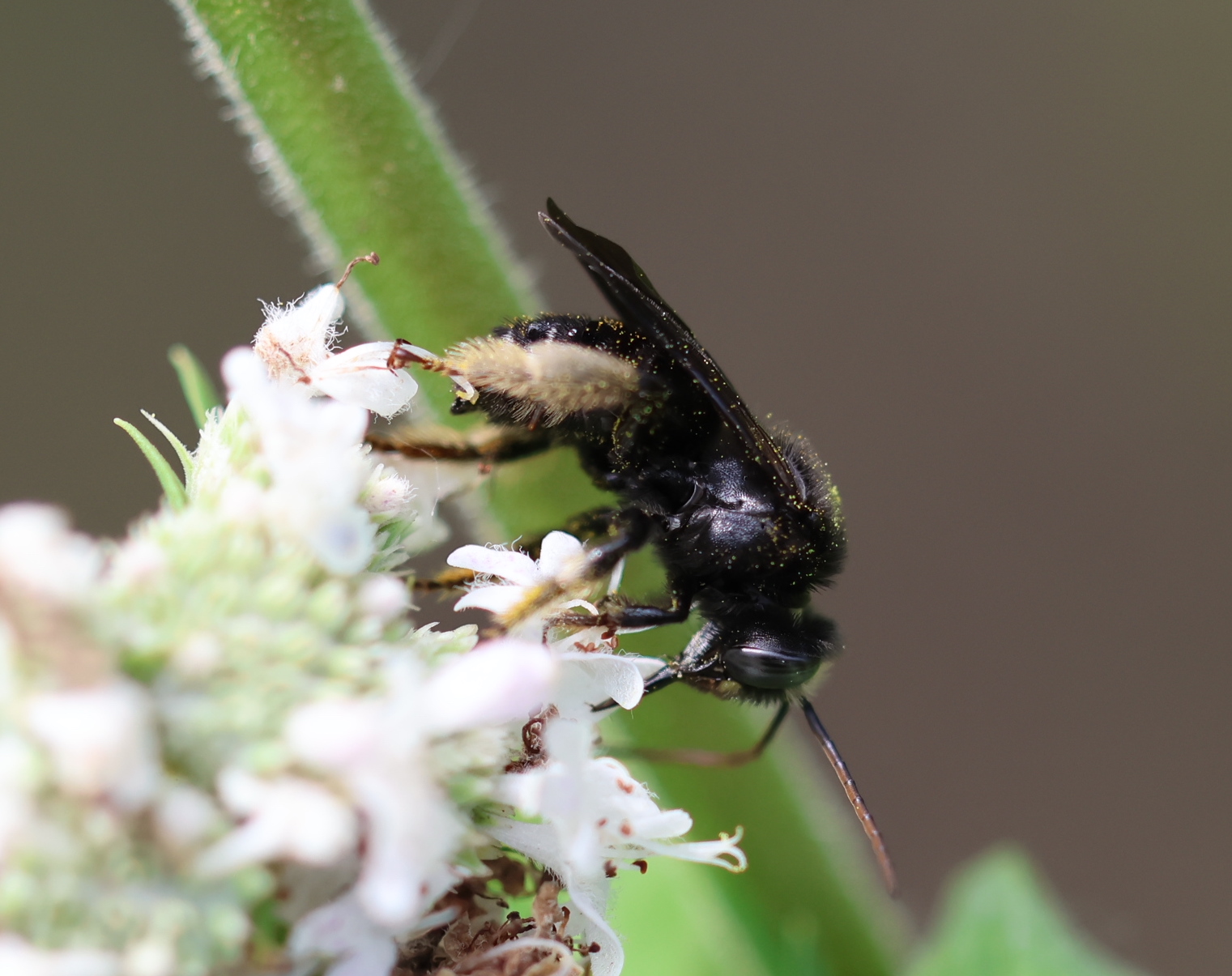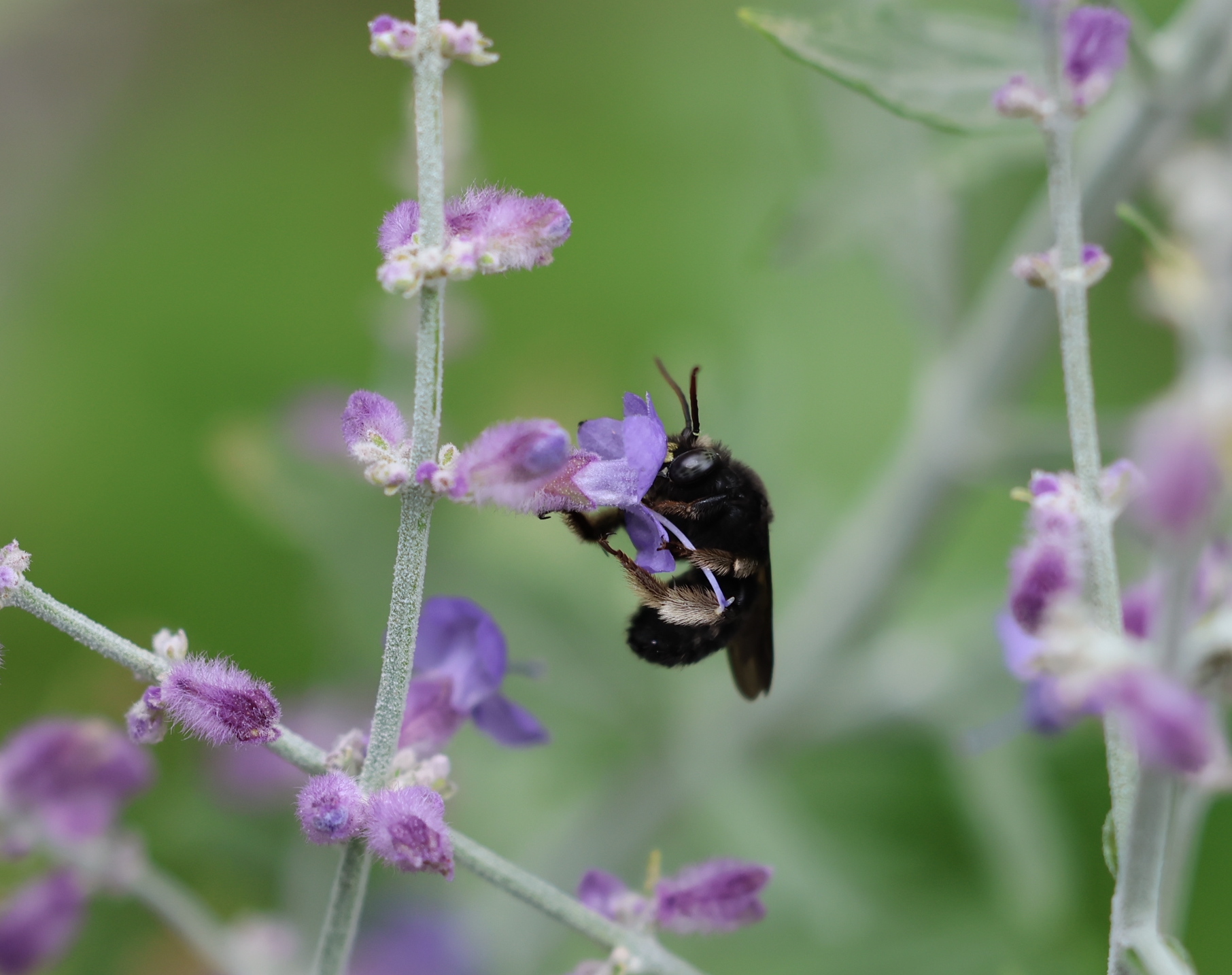Author: Lisa Trapp
A few months ago we highlighted some interesting characteristics about a well known and highly effective pollinator, the bumble bee (Bombus spp.). Bumble bees are only one of many native bees we might spot in our, or a neighborhood, garden. Bees can be very hard to identify by sight alone, for a number of reasons — perhaps they are too small to see differentiations, or maybe they mimic other species, sometimes they just move too fast to get a good look. Today we are going to take a closer look at long-horned bees. Typically on the larger side, these pollinators can be easily confused with bumble bees or carpenter bees unless you know what to look for!
First things first, long-horned bees are part of a tribe (or collection of genuses) classified within the family Apidaea. This is an incredibly diverse family, and includes bumblebees (Bombus), honey bees (Apis mellifera), and carpenter bees (Xylocopa) as examples. Worldwide there are close to 6,000 species of Apidea and species can be found on every continent (Antarctica excluded). Like other Apids, long-horned bees are typically quite hairy and have long tongues, making them great at acquiring nectar resources as well as collecting pollen. Females have particularly long and thick hairs on their hind legs for pollen collection, and males have long antennae, hence the name “long-horn”. That being said, species variation is still fairly diverse and long-horned bees can be both generalist and specialist in terms of their resource collection. Though there are many genera found in the long-horned tribe there are two genera in Eastern North America which we are most likely to find in our local gardens: Eucera and Melissodes.

The Eucera genus is made up of larger bees with six genera found worldwide and fifteen species identified in the Eastern United States. Males have long antennae which are completely black in color. Species can be seen from spring through fall, but can be hard to identify just on appearance alone. Most Eucera are generalists, and will collect resources from a wide variety of flowering plants. But those that are specialists tend to favor plants in the Asteraceae family. Eucera are typically ground nesters, with incredibly small tunnels and inconspicuous hole openings. This can make their ground nests hard to spot, so try to look out for them in the gardens during the warm season rather than hunt for nests in the winter. Solitary in nature, females will care for their own brood, and offspring will overwinter underground before emerging in the spring.
Similar to Eucera is another commonly found genus, Melissodes. So similar, in fact, that identification purely by looking at them is extremely challenging. 125 species of Melissodes are found world wide, but they are all almost exclusively found in North and South America. There are nearly one hundred distinct species in North America, with a whopping thirty species just in the Eastern part of the continent. Generally, Melissodes fly later in the year and are smaller than species classified under Eucera. That being said, they tend to prefer the same flower resources, and specialists in Melissodes can also be found prioritizing plants in Asteraceae including Helianthus, Rudbeckia, and Solidago. The vast majority of Melissodes , about 90%, are completely solitary ground nesters, but some species will live in slightly more communal groups. The communal groups will share a nest entrance with different branching tunnels for each female. Individual females will each take care of their own brood, but come and go through a shared entrance.

We are lucky enough to have spotted a couple of these hairy bees in the gardens along the Low Line. Fairly large in size, their fast movements can make them tricky to identify if they aren’t sitting still. Keep an eye in your gardens, perhaps something you thought was a bumble bee is in fact a long-horned bee!
REFERENCES:
“Common bees of eastern North America”, Carril & Wilson
https://mdc.mo.gov/discover-nature/field-guide/longhorn-bees
“BEES An Identification and Native Plant Forage Guide”, Holm


